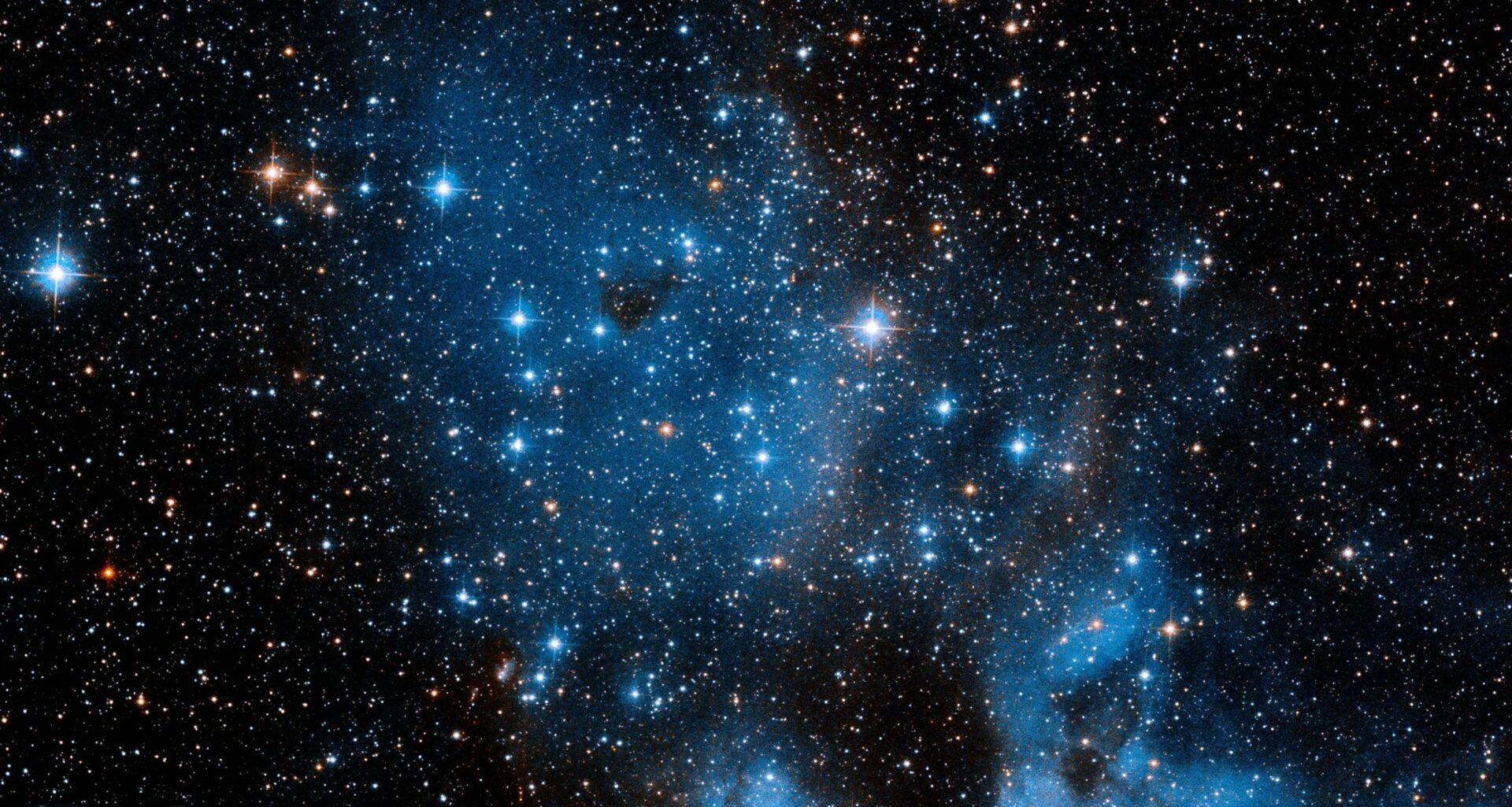Recently, the Hubble Space Telescope took a vivid photo of a wonderful star cluster called NGC 1858. It is located in a region full of star formation regions. This region is part of the Large Magellanic Cloud — one of the satellite galaxies of the Milky Way — and is located 160 thousand light-years away from us. It is believed that the cluster is about 10 million years old.

This particular star cluster is called open, which means that it is not as strongly bound by gravity as some other structures, and has an irregular shape. In addition, the amount of dust and gas present here means that it can be classified as an emission nebula, since the light of the stars in this region has ionized the gas and causes it to emit its own light.
In NGC 1858, researchers found a protostar indicating that star formation in the cluster could still be active or had stopped quite recently. The presence of an emission nebula also indicates that star formation has recently occurred here, since the radiation needed to ionize the nebula’s gas comes from stars that live only a short time.
The Large Magellanic Cloud is one of several satellite galaxies of the Milky Way that are gravitationally bound to it. In billions of years, the Small and Large Magellanic Clouds will eventually collide with our Galaxy in billions of years.
Earlier we reported how artifacts from the distant past were found in the lonely neighbor of the Milky Way. Hubble also discovered turquoise seas in the Large Magellanic Cloud.
According to NASA
Follow us on Twitter to get the most interesting space news in time
https://twitter.com/ust_magazine
